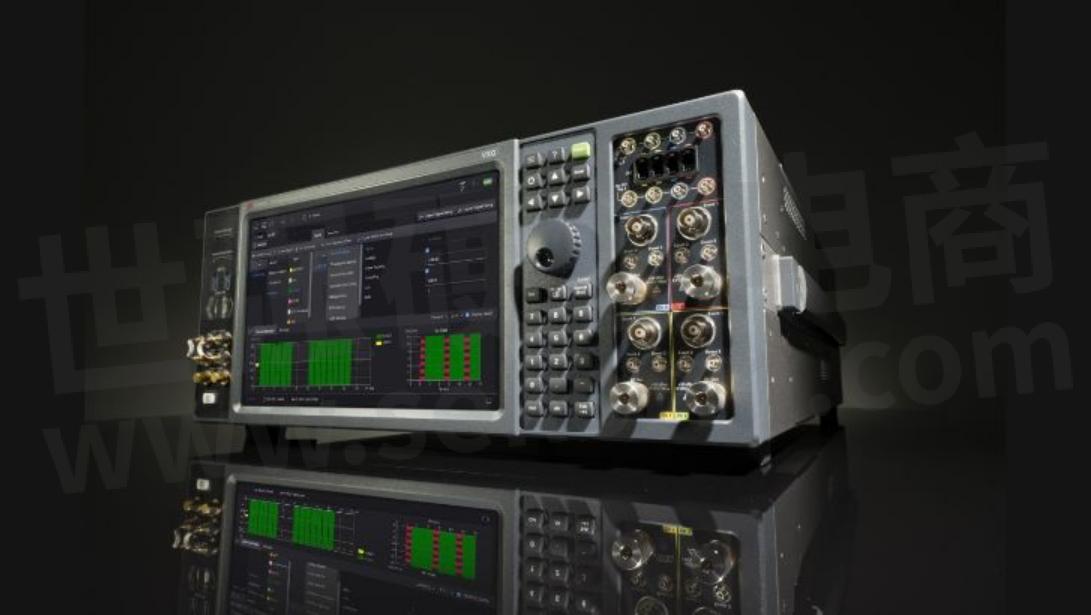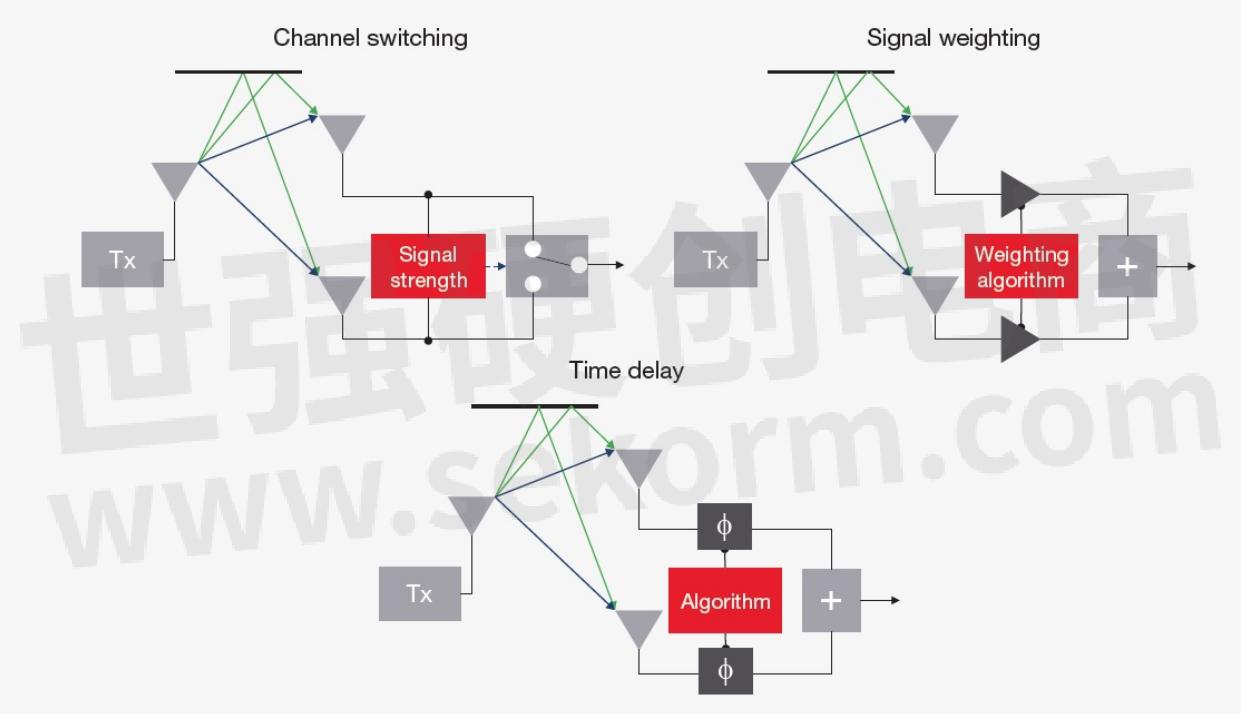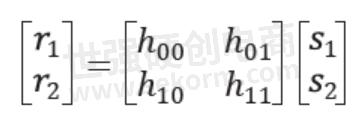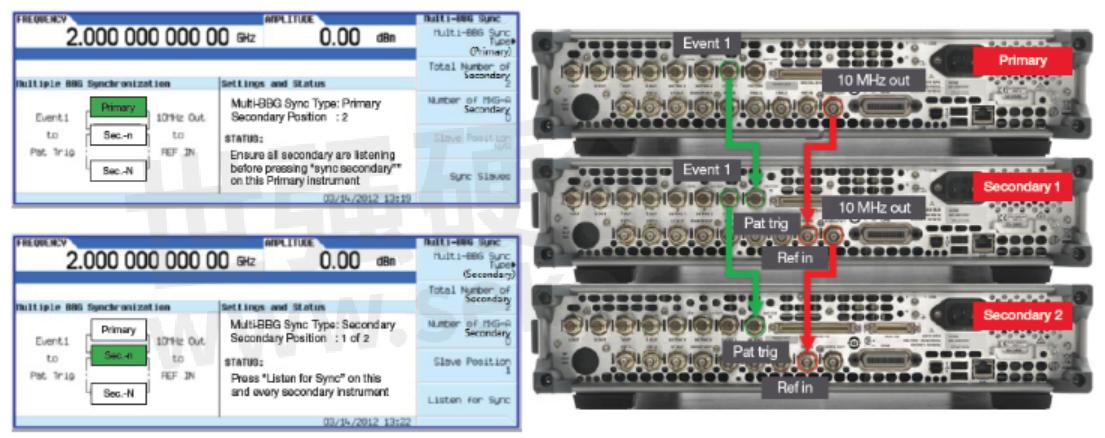Simplify Complex RF Testing with Vector Signal Generators

Most technology today is wireless or nearly wireless. The majority of wireless systems use multiple antenna techniques at the transmitter, receiver, or both to enhance system performance in commercial or aerospace and defense applications. Multi-antenna techniques include antenna diversity, multiple-input / multiple-output (MIMO) spatial multiplexing, beamforming, and phased-array radar. Radio-frequency (RF) engineers use these techniques to achieve diversity, multiplexing, or antenna gains.

Keysight M9484C VXG vector signal generator
As the number of antennas in a system has increased, so has the test complexity. This blog post focuses on the various multi-antenna design techniques and solutions to simplify complex RF testing.
Multi-Antenna Techniques
Wireless systems require increasingly higher throughput and, in turn, wider bandwidth. RF designers use multiple antennas in their systems to bolster the receiver’s robustness, data throughput, and signal-to-noise ratio (SNR). They can do this using a variety of multi-antenna techniques.
Spatial diversity
One technique uses spatial diversity systems. In wireless communication systems, multipath occurs when radio signals reach the receiver’s antenna using two or more paths. When multipath signals arrive at a receiver, they combine constructively or destructively, depending on the relative phase.
Spatial diversity, also known as antenna diversity, solves the signal multipath problem. RF engineers can improve the quality and reliability of the wireless link with channel switching, signal weighting, and time-delay systems by using two or more antennas, as shown in Figure 1.
The channel-switching system detects signal strength from each antenna and shifts to the path with higher signal strength. The signal-weighting system sets the gain to maximize the receiver’s power or SNR based on its weighting algorithm. Then the time-delay (beamforming) system uses a digital automatic delay equalizer to align the signals with delays on the receiver side.

Figure 1. Spatial diversity systems
Spatial multiplexing
Another technique, spatial multiplexing or MIMO, uses multiple transmit and receive antennas to exploit multipath propagation. MIMO systems use computationally inverse channel property estimation algorithms to recover original data. The receiver can recover the transmit signals s1 and s2 through signal processing by estimating the wireless channel depicted in the h matrix in Figure 2.

Figure 2. Signal Matrix
Beamforming
Another multi-antenna method, known as beamforming, involves forming a narrow antenna beam. This process enables efficient performance and increases the multiplexing gain. Coherently driven antennas with the appropriate phase delay between antenna elements can form signal beams. Most signal generators have an independent baseband generator (BBG) and synthesizer, ideal for generating single-channel RF systems.
Timing Synchronization Test System
When considering multiple signal generators, it is essential to understand the timing alignment of baseband signals. RF vector signal generators (VSG) like the Keysight M9484C VXG use dual arbitrary waveform generators (AWG) to produce complex baseband I/Q signals. The dual AWG controls the written playback sequence of waveform segments in the internal baseband generator’s memory.
Synchronizing multiple instruments requires primary / secondary operation in which the primary instrument generates a trigger signal to enable other secondary instruments. Another benefit of vector signal generators is that they provide waveform markers for specific points on a waveform segment. These enable precise time alignment to serve as a trigger signal on a measurement. Cables and external devices can impact how long a trigger signal takes to reach every instrument. Using a channel skew allows more control of your primary instrument for precise time synchronization among all channels.
However, sampling clock differences can accumulate over time. When synchronizing multiple baseband generators, you must confirm that you have a common frequency reference. Timing alignment ensures that time-aligned waveforms from different baseband generators are set properly. Figure 3 is an example of a setup for synchronizing multiple baseband generators using Keysight’s MXG signal generators. The multiple BBG sync feature synchronizes waveform generation for up to 16 signal generators within a value of + / - 8 ns between the primary and the last secondary instruments.

Figure 3. Multiple baseband synchronization setups
Summary
Wireless systems require complex designs, increasing test complexity. To test multichannel devices effectively, RF engineers must perform highly synchronized multichannel signal generation and analysis. Accurate triggering ensures that all measurements start at the proper time.
To simplify your test synchronization, consider a modular test system that enables the integration of multiple instruments. Keysight VXGs simplify this process because of their ability to synchronize multiple baseband generators.
- +1 Like
- Add to Favorites
Recommend
- Keysight Technologies Delivers High Performance Vector Signal Generator for Wideband Multichannel mmWave Applications
- Keysight Solutions Selected by Flexium to Deliver New Liquid Crystal Polymer Transceiver Applications
- Keysight Supports Verification of Open RAN Radio Units Powered by Qualcomm Infrastructure Solutions
- Keysight Technologies Acquires Quantum Benchmar, Augmenting Keysight‘s Quantum Portfolio
- Keysight First to Gain GCF Approval of Cases for Validating 5G New Radio mmWave Devices in Standalone Mode
- Keysight‘s O-RAN Test Solutions Enable Xilinx to Accelerate Development of Massive MIMO Radio Reference Design
- Keysight and Transphorm Create Power Supply Reference Design that Lowers Product Costs; Speeds Time to Market
- Keysight Massively Parallel Board Test System Selected by LACROIX in Automotive Printed Circuit Board Manufacturing
This document is provided by Sekorm Platform for VIP exclusive service. The copyright is owned by Sekorm. Without authorization, any medias, websites or individual are not allowed to reprint. When authorizing the reprint, the link of www.sekorm.com must be indicated.






























































































































































































































































































































































































































































































































































































































































































































































































































































































